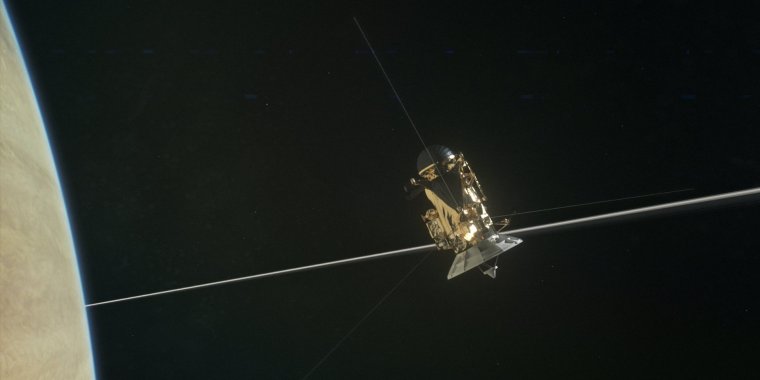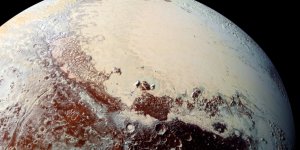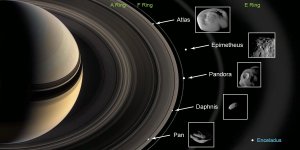| News / Space News |
Cassini Finds 'The Big Empty' Close to Saturn
As NASA's Cassini spacecraft prepares to shoot the narrow gap between Saturn and its rings for the second time in its Grand Finale, Cassini engineers are delighted, while ring scientists are puzzled, that the region appears to be relatively dust-free.

NASA's Cassini spacecraft is shown diving through the gap between Saturn and its rings in this artist's depiction. ![]()
A dustier environment in the gap might have meant the spacecraft's saucer-shaped main antenna would be needed as a shield during most future dives through the ring plane. This would have forced changes to how and when Cassini's instruments would be able to make observations.
Based on images from Cassini, models of the ring particle environment in the approximately 1,200-mile-wide (2,000-kilometer-wide) region between Saturn and its rings suggested the area would not have large particles that would pose a danger to the spacecraft.
But because no spacecraft had ever passed through the region before, Cassini engineers oriented the spacecraft so that its 13-foot-wide (4-meter-wide) antenna pointed in the direction of oncoming ring particles, shielding its delicate instruments as a protective measure during its April 26 dive.
Cassini's Radio and Plasma Wave Science (RPWS) instrument was one of two science instruments with sensors that poke out from the protective shield of the antenna (the other being Cassini's magnetometer). RPWS detected the hits of hundreds of ring particles per second when it crossed the ring plane just outside of Saturn's main rings, but only detected a few pings on April 26. (NASA)
YOU MAY ALSO LIKE


